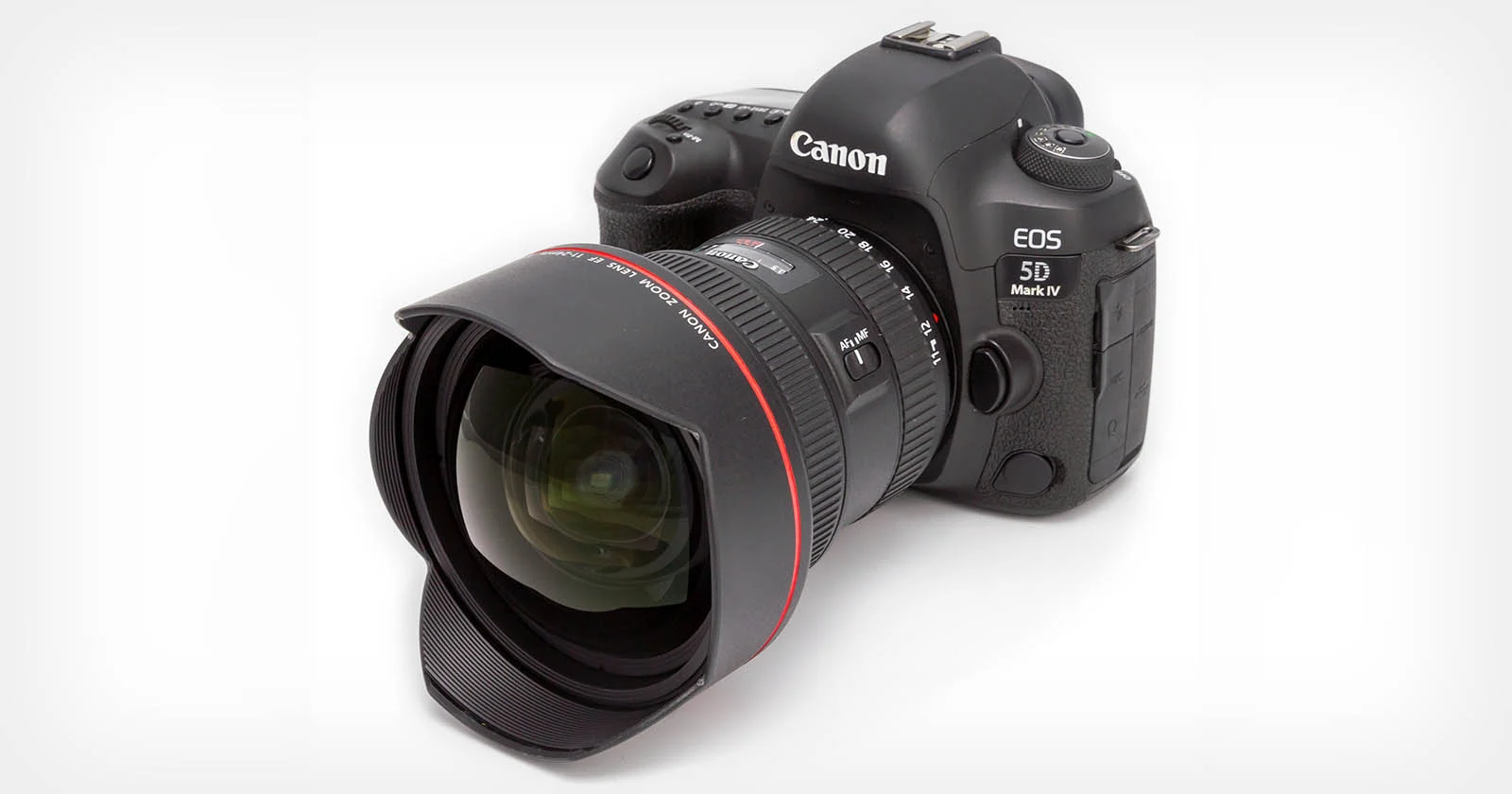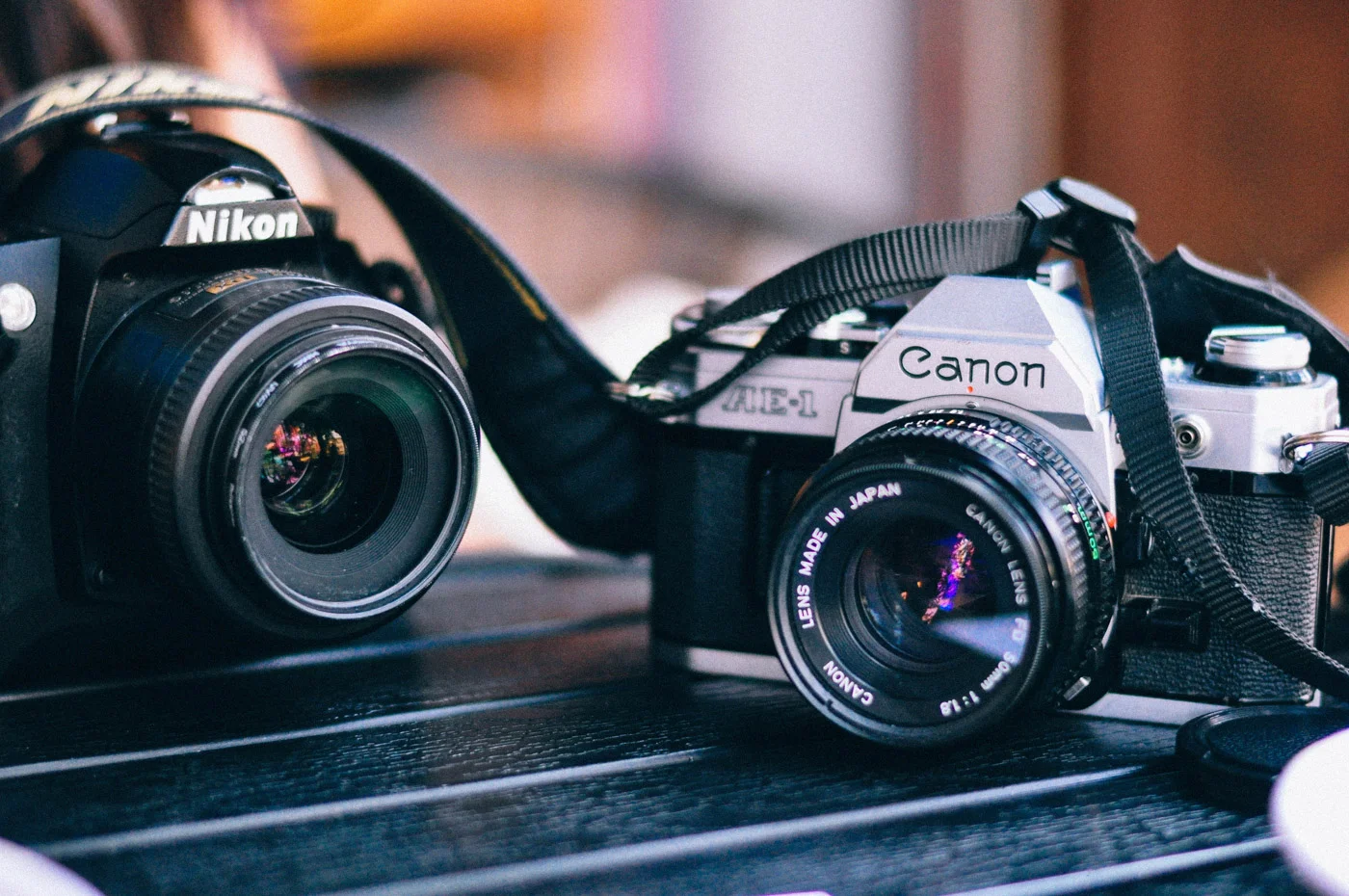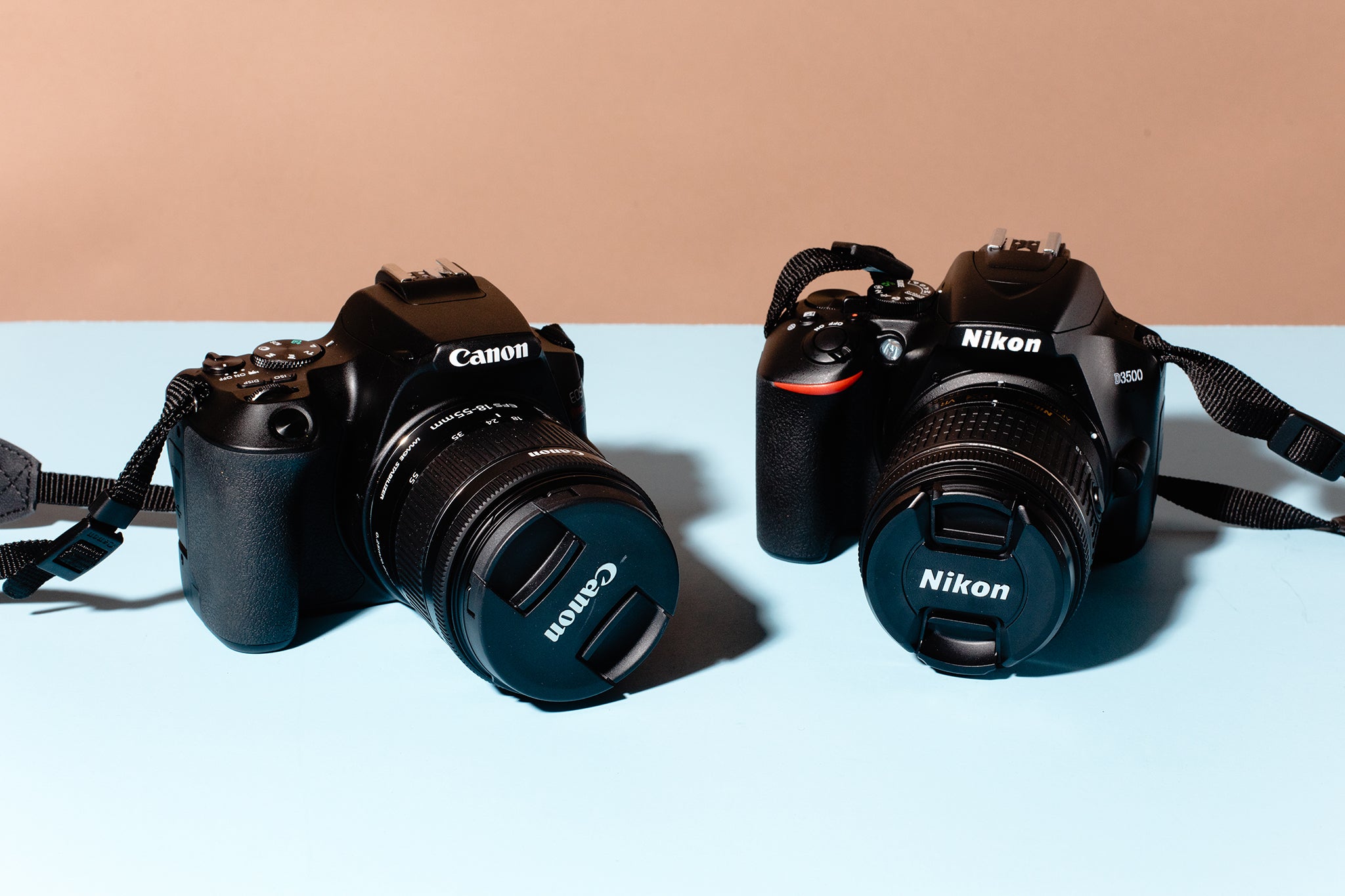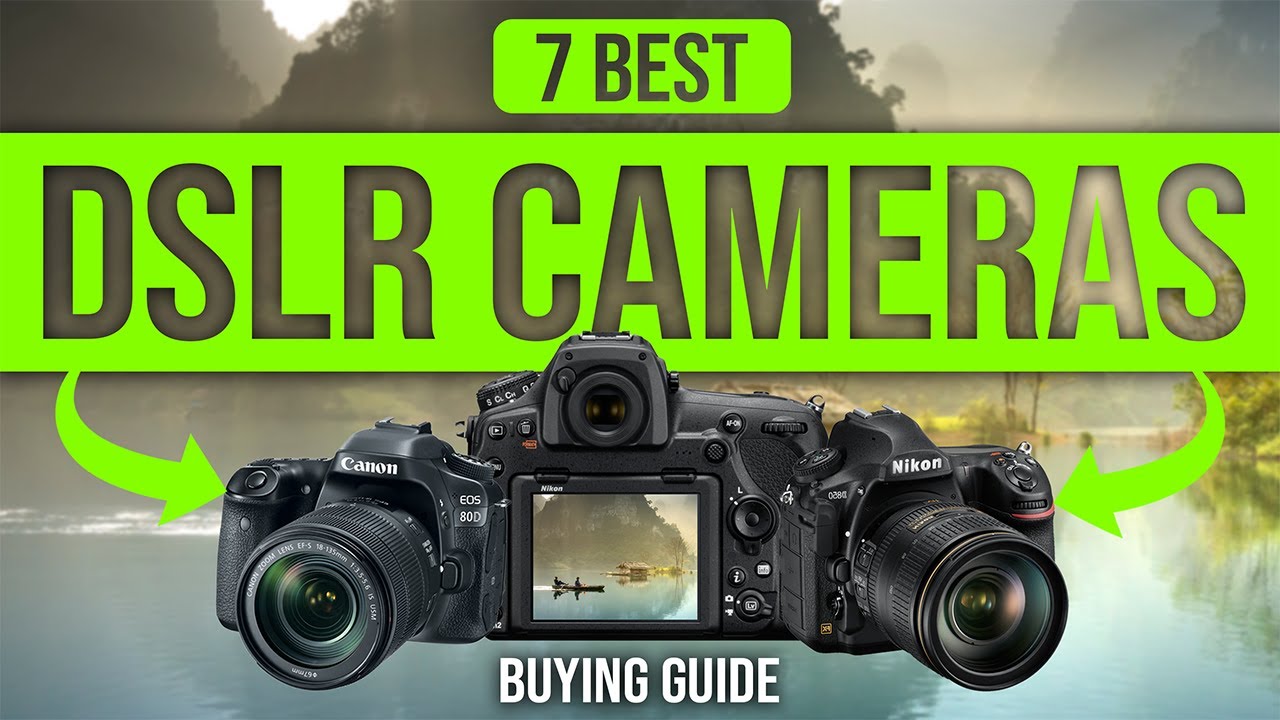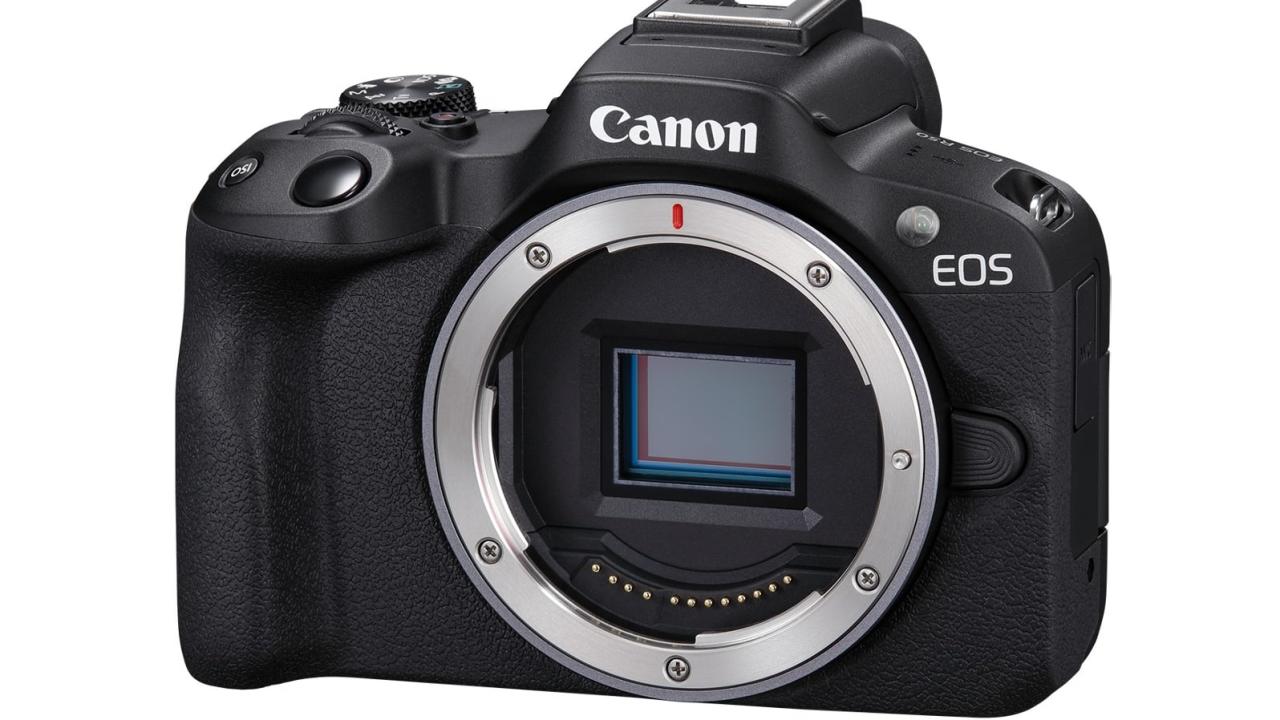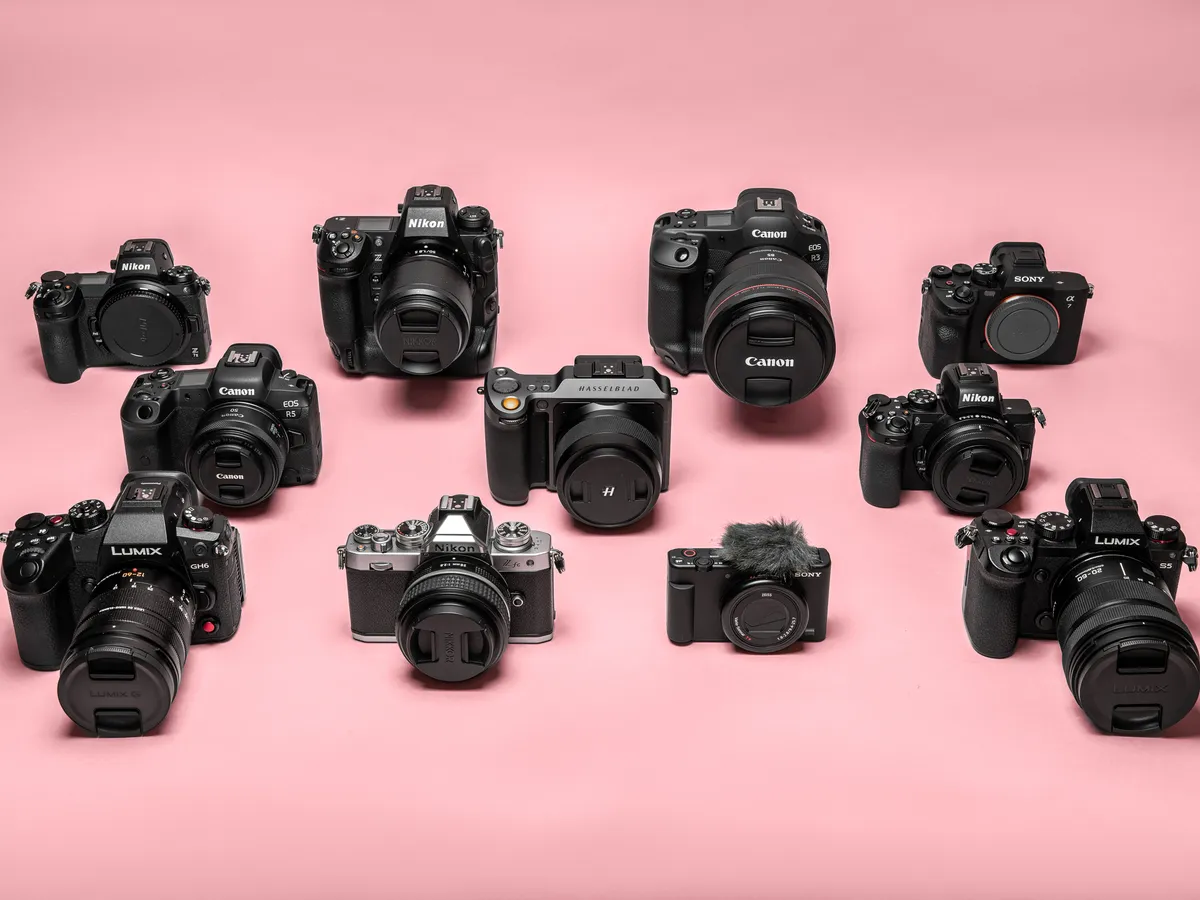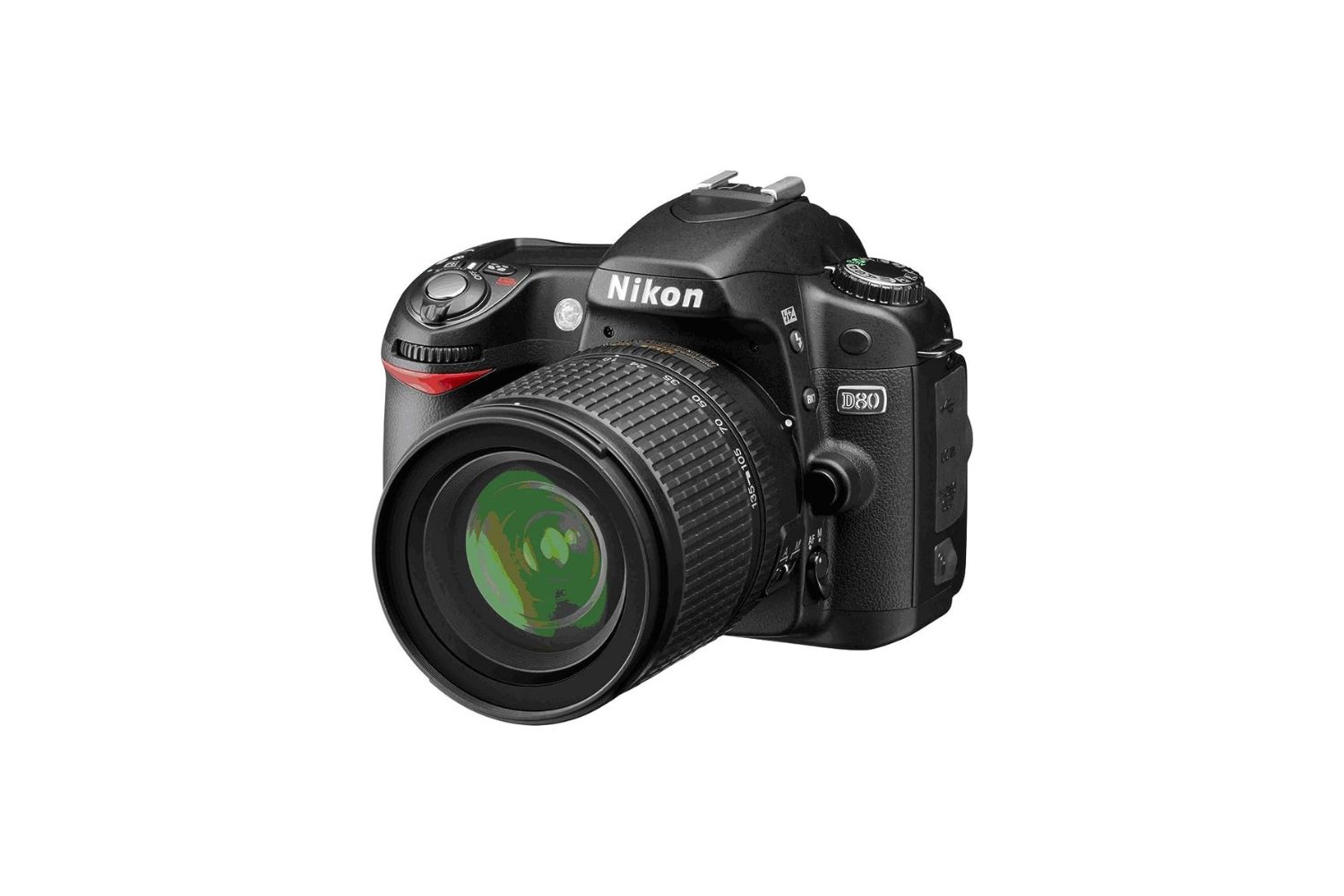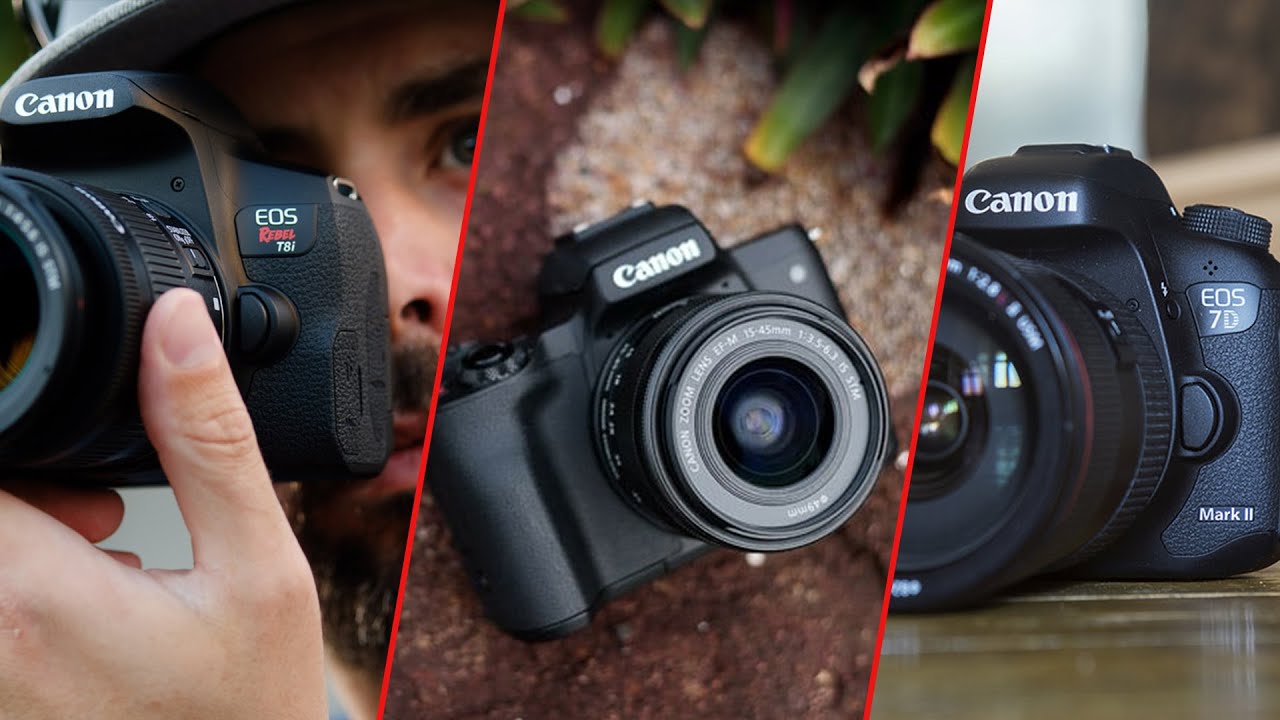Introduction
Welcome to the world of digital photography, where capturing memories has never been easier and more exciting. With advancements in technology, digital cameras have become an essential tool for both amateur and professional photographers. Among the various types of digital cameras available, the Digital Camera SLR (Single Lens Reflex) stands out as a popular choice.
A Digital Camera SLR offers photographers the flexibility and control they need to capture stunning images. Whether you are a photography enthusiast or a professional looking to take your craft to the next level, investing in a Digital Camera SLR can greatly enhance your photography experience.
In this article, we will explore the world of Digital Camera SLRs, highlighting their advantages, key features, and providing tips on how to maximize their potential. Whether you are new to the world of Digital Camera SLRs or looking to upgrade your existing equipment, this guide will help you make informed decisions on choosing and using a Digital Camera SLR.
So, let’s dive in and discover the wonderful world of Digital Camera SLRs!
What is a Digital Camera SLR?
A Digital Camera SLR, or Single Lens Reflex, is a type of digital camera that uses a mirror and prism system to allow you to view and capture images through the same lens. This design provides a more accurate representation of what you will capture in your photograph compared to other types of digital cameras.
Unlike point-and-shoot cameras or smartphones, Digital Camera SLRs offer a range of manual settings, allowing you to have full control over aspects such as aperture, shutter speed, ISO, and focus. This level of control gives photographers the flexibility to achieve the desired artistic effect and capture professional-quality images.
One of the key components of a Digital Camera SLR is the interchangeable lens system. This means that you can attach different lenses to the camera body depending on your specific needs. From wide-angle lenses for landscapes to telephoto lenses for capturing distant subjects, the versatility of the interchangeable lens system allows you to adapt to various photography genres and situations.
Another distinguishing feature of Digital Camera SLRs is the optical viewfinder. This viewfinder allows you to see the scene directly through the lens, providing a clear and unobstructed view. This is especially beneficial when shooting in bright sunlight or in low-light conditions where the LCD screen may be difficult to see.
Furthermore, Digital Camera SLRs generally have larger image sensors compared to other types of digital cameras. This larger sensor size results in better image quality, improved low-light performance, and increased dynamic range.
Overall, the Digital Camera SLR combines advanced technology, manual controls, and interchangeable lenses to provide photographers with a versatile tool for capturing high-quality images. Whether you are a hobbyist or a professional, a Digital Camera SLR allows you to unleash your creativity and take your photography to new heights.
Advantages of Digital Camera SLR
Investing in a Digital Camera SLR comes with several advantages that make it a preferred choice for many photographers. Here are some key advantages worth considering:
- Image Quality: One of the most significant advantages of a Digital Camera SLR is the superior image quality it offers. With larger image sensors, SLRs are capable of capturing more detail, producing sharper images, and delivering better overall image quality compared to other digital cameras.
- Interchangeable Lenses: Digital Camera SLRs allow for the use of interchangeable lenses, which provides photographers with endless creative possibilities. Whether capturing wide-angle landscapes, zooming in on distant subjects, or achieving beautiful bokeh effects, the ability to swap lenses allows for versatility and customization to suit various photographic situations.
- Manual Control: SLRs offer advanced manual controls, giving photographers full control over their camera settings. This control allows for precise adjustments of parameters such as aperture, shutter speed, and ISO, enabling photographers to have complete creative control over their images and achieve their desired artistic vision.
- Optical Viewfinder: Unlike point-and-shoot cameras, Digital Camera SLRs come with an optical viewfinder. This viewfinder allows you to see the scene directly through the lens, providing a clear, real-time view of your subject. The optical viewfinder is especially useful in bright sunlight or low-light situations, where the LCD screen may be difficult to see.
- Speed and Responsiveness: SLRs are known for their fast autofocus systems and quick response times. This makes them ideal for capturing fast-moving subjects, ensuring you don’t miss any crucial moment. Additionally, SLRs have minimal shutter lag, allowing for more accurate timing of shots.
- Expandable Accessories: With Digital Camera SLRs, you can further enhance your photography experience by adding a wide range of accessories. From external flash units to advanced tripod systems, the ability to expand and customize your equipment allows you to overcome various photographic challenges and explore new creative avenues.
These advantages make a Digital Camera SLR an excellent choice for photographers who value image quality, manual control, versatility, and creativity. Whether you are a professional photographer or an enthusiast looking to elevate your photography skills, a Digital Camera SLR can help you capture stunning images that truly stand out.
Factors to Consider When Choosing a Digital Camera SLR
Choosing the right Digital Camera SLR can be an overwhelming task with the wide range of options available in the market. However, considering certain factors can help you make an informed decision. Here are some key factors to consider when choosing a Digital Camera SLR:
- Budget: Determine your budget range before starting your search for a Digital Camera SLR. Prices can vary significantly depending on the brand, features, and specifications. Consider what you can afford and allocate a budget accordingly.
- Level of Expertise: Assess your skill level and photography needs. Are you a beginner, an enthusiast, or a professional? Understanding your level of expertise will help in determining the appropriate features, functionalities, and complexity of camera controls that will suit your needs.
- Megapixel Count: While megapixels alone do not determine image quality, higher megapixel counts generally allow for more detail in photographs. Consider the types of photography you plan to pursue and choose a camera with an appropriate megapixel count.
- Camera Sensor: The size of the camera sensor plays a critical role in determining image quality. Larger sensors generally provide better low-light performance and dynamic range. Consider the sensor size when comparing different models.
- Lens Compatibility: Check the lens compatibility of the camera body you are considering. Ensure that there is a wide range of lenses available for the camera brand you choose, as this will allow you to expand your photography options in the future.
- Image Stabilization: Look for cameras with built-in image stabilization. This feature helps reduce camera shake and can significantly improve the sharpness of your images, especially when shooting handheld or in low-light conditions.
- Autofocus System: Consider the autofocus system and its performance. Look for cameras with quick and accurate autofocus capabilities, especially if you plan to shoot fast-moving subjects like sports or wildlife.
- Video Capabilities: If you are interested in video recording, examine the camera’s video capabilities, such as resolution, frame rates, and available shooting modes. Ensure that the camera supports the video features you require.
- Ergonomics and Comfort: Pick a camera that feels comfortable in your hands and has a layout of buttons and controls that are intuitive for you to navigate. Consider the weight and size of the camera, as you will be carrying it for extended periods.
- Reviews and Recommendations: Research and read reviews from reputable sources, and seek recommendations from experienced photographers. This will provide valuable insights into the performance and reliability of different camera models.
Considering these factors will help you narrow down your options and choose a Digital Camera SLR that aligns with your photography requirements, budget, and skill level. Remember, finding the right camera is a personal choice, so take the time to thoroughly research and compare models before making your decision.
Popular Digital Camera SLR Brands
When it comes to Digital Camera SLRs, several brands have established a strong reputation for producing high-quality cameras. Here are some of the most popular Digital Camera SLR brands in the market:
- Nikon: Nikon is a leading brand in the photography industry, known for producing a wide range of Digital Camera SLRs suitable for various skill levels and budgets. Their cameras are highly regarded for their exceptional image quality, advanced autofocus systems, and extensive lens options.
- Canon: Canon is another prominent brand that offers a diverse lineup of Digital Camera SLRs. Canon cameras are known for their reliable performance, excellent image quality, and user-friendly interfaces. They also offer an extensive range of lenses, making it a popular choice among photographers.
- Sony: Sony has gained a significant presence in the Digital Camera SLR market with its innovative mirrorless cameras. While not a traditional SLR, Sony’s mirrorless cameras offer comparable image quality and advanced features in a more compact and lightweight form factor. They are known for their excellent autofocus, high-resolution sensors, and impressive video capabilities.
- Fujifilm: Fujifilm is renowned for its retro-inspired design and film simulation modes, making their Digital Camera SLRs stand out. Fujifilm cameras offer exceptional image quality, robust build quality, and a wide range of lenses suitable for various genres of photography.
- Pentax: Pentax is a brand known for producing rugged and durable Digital Camera SLRs. Their cameras are weather-sealed, making them suitable for outdoor and adventure photography. Pentax cameras also offer exceptional value for money, with competitive features and image quality.
- Olympus: Olympus is notable for its Micro Four Thirds system, which combines the benefits of SLRs with a compact size. Olympus cameras feature in-body image stabilization, high-speed autofocus, and a vast selection of lenses. They are popular among travel photographers and those who value portability and versatility.
These brands have established themselves as leaders in the Digital Camera SLR market, and each offers a unique set of features, innovations, and lens ecosystems. When choosing a Digital Camera SLR, consider factors such as image quality, autofocus capabilities, lens availability, and overall system compatibility to determine which brand best aligns with your needs and preferences.
Understanding Key Features of Digital Camera SLR
When exploring the world of Digital Camera SLRs, it’s essential to understand the key features that distinguish them from other digital cameras. Here are some of the important features to consider:
- Image Sensor: The image sensor is a crucial component of a Digital Camera SLR. It captures the light and converts it into a digital image. SLRs typically have larger sensors compared to point-and-shoot cameras, resulting in better image quality, improved low-light performance, and increased dynamic range.
- Lens Compatibility: One of the most significant advantages of Digital Camera SLRs is their ability to interchange lenses. Different brands offer a vast selection of lenses, allowing you to choose the specific lens that suits your photography needs. Understanding lens compatibility ensures that you have access to a wide range of lenses to experiment with.
- Autofocus System: Digital Camera SLRs are equipped with advanced autofocus systems that allow for quick and accurate focusing on the subject. These systems utilize multiple focus points, enabling the camera to track and focus on moving subjects effectively. Understanding the autofocus system and its capabilities is essential, especially for capturing fast-moving scenes.
- Manual Controls: SLRs provide manual control over various settings, including aperture, shutter speed, ISO, and focus. This level of control allows photographers to achieve precise adjustments and creative effects. Familiarize yourself with the camera’s controls and menus to make the most of these manual settings.
- Viewfinder: Digital Camera SLRs come with an optical viewfinder that allows you to see the scene through the lens. The viewfinder offers a clear, unobstructed view, which is particularly useful in bright sunlight or low-light conditions. Understanding how to utilize the viewfinder effectively helps in framing and composing your shots accurately.
- Image Stabilization: Some Digital Camera SLRs feature built-in image stabilization, which helps reduce camera shake and allows for sharper images, especially when shooting handheld or in low-light situations. This feature compensates for small movements and ensures that your images are crisp and blur-free.
- Burst Mode: Burst mode, also known as continuous shooting mode, allows the camera to capture a rapid sequence of images in quick succession. This feature is beneficial when photographing fast-moving subjects or capturing the perfect moment in dynamic situations. Understanding how to use burst mode effectively can help you never miss a crucial shot.
- ISO Sensitivity: ISO sensitivity determines the camera’s ability to capture images in low-light conditions. Higher ISO settings allow for faster shutter speeds but can introduce digital noise. Understanding how to balance ISO sensitivity ensures optimal image quality in different lighting situations.
- Video Recording: Many Digital Camera SLRs offer video recording capabilities. Understanding the camera’s video resolution, frame rate options, and video features allows you to create high-quality videos alongside your photography
By familiarizing yourself with these key features, you can make informed decisions when choosing a Digital Camera SLR and utilize its capabilities to their fullest potential. Experimenting with different settings and features will help you develop your photography skills and capture stunning images.
Tips for Using a Digital Camera SLR
Using a Digital Camera SLR can be an exciting and rewarding experience. Here are some tips to help you make the most out of your camera:
- Read the Manual: Take the time to read the camera’s manual thoroughly. It may seem overwhelming at first, but understanding the features and functions of your camera will empower you to maximize its potential.
- Shoot in RAW: When possible, shoot in RAW format. RAW files retain more image data and allow for greater flexibility in post-processing. This gives you more control over adjusting exposure, white balance, and other parameters during editing.
- Master the Exposure Triangle: Understand the relationship between aperture, shutter speed, and ISO (the exposure triangle). Experiment with different settings to achieve the desired exposure and learn how they affect the image’s depth of field, motion blur, and noise levels.
- Practice Composition: Composition plays a vital role in creating visually appealing images. Learn about the rule of thirds, leading lines, symmetry, and other composition techniques. Experiment with different angles and perspectives to add interest to your photos.
- Utilize the Focus Points: Take advantage of the autofocus system’s multiple focus points. Select the appropriate focus point to achieve accurate and sharp focus on your subject. Experiment with different focus modes to suit different shooting scenarios.
- Experiment with Different Lenses: Interchangeable lenses offer versatility. Try different lens focal lengths and apertures to explore various creative possibilities. Wide-angle lenses are great for landscapes, while telephoto lenses can capture distant subjects and create beautiful background separation.
- Be Mindful of Lighting: Pay attention to lighting conditions while shooting. Take advantage of golden hour or blue hour for soft and warm lighting. Experiment with different lighting techniques, such as backlighting or using artificial lights, to create different moods and effects.
- Use a Tripod for Stability: In low light or for time-lapse photography, using a tripod can significantly improve the sharpness and stability of your images. It allows for longer exposures without camera shake and provides a steady platform for capturing specific compositions.
- Practice Patience and Persistence: Photography is an art that requires patience and persistence. Keep practicing, exploring new subjects, and experimenting with different techniques. Over time, you will develop a unique style and continue to improve your skills.
- Review and Learn from your Images: Take the time to review your images after each shoot. Analyze what worked and what didn’t. Learn from your mistakes and successes to refine your technique and gradually develop your own photographic style.
Remember, photography is a continuous learning process. Embrace the journey, have fun, and don’t be afraid to push your boundaries. With practice and exploration, you’ll capture stunning images and make the most out of your Digital Camera SLR.
How to Take Professional-Looking Photos with a Digital Camera SLR
Taking professional-looking photos with a Digital Camera SLR requires a combination of technical knowledge, artistic vision, and attention to detail. Here are some tips to help you elevate your photography and achieve professional results:
- Master Exposure Control: Understand the relationship between aperture, shutter speed, and ISO. Experiment with different settings to achieve the desired exposure. Learn how to balance these elements to control depth of field, freeze or blur motion, and manage noise levels.
- Prioritize Sharp Focus: Invest time in learning and practicing autofocus techniques. Use the appropriate focus mode and autofocus points for different subjects and compositions. Ensure your subject is sharp, especially in portrait and macro photography.
- Pay Attention to Lighting: Lighting is a critical factor in professional-looking photos. Learn to identify and manipulate natural light. Consider the direction, intensity, and quality of light. Use diffusers, reflectors, and off-camera flash to create desired lighting effects.
- Create Depth and Dimension: Add dimension to your photos by paying attention to foreground, middle ground, and background elements. Incorporate leading lines, framing techniques, and overlapping elements to create depth and guide the viewer’s eye through the image.
- Compose with Intent: Take time to compose your shots thoughtfully. Utilize compositional techniques such as the rule of thirds, symmetry, leading lines, and framing. Consider the visual balance, focal points, and negative space in your composition.
- Control White Balance: Understand how white balance affects the color temperature of your photos. Use the appropriate white balance setting or adjust it in post-processing to ensure accurate colors. Experiment with different white balance settings to create specific moods and effects.
- Utilize Shutter Speed Creatively: Experiment with different shutter speeds to capture motion. Use fast shutter speeds to freeze action or slow shutter speeds to create motion blur. Blend long exposures with static elements for unique and artistic effects.
- Post-Processing Enhancements: Professional-looking photos often benefit from post-processing adjustments. Learn how to use editing software to enhance colors, contrast, sharpness, and remove distractions. But remember to maintain a natural and realistic representation of the scene.
- Focus on Composition and Storytelling: Pay attention to the story or message you want to convey through your photos. Consider the composition, subject placement, and visual elements that support your storytelling. Look for interesting angles, details, and moments that capture the viewer’s attention.
- Practice Patience and Persistence: Great photography takes time and practice. Be patient, persistent, and open to learning. Observe the work of other photographers for inspiration and continually challenge yourself to improve your skills and develop your own unique style.
By applying these tips and consistently practicing, you can elevate your photography and capture professional-looking photos with your Digital Camera SLR. Remember, photography is both a technical skill and a creative art form, so embrace your creativity and enjoy the journey of capturing stunning images.
Conclusion
Digital Camera SLRs have revolutionized the way we capture and create images. With their advanced technology, interchangeable lenses, and manual controls, these cameras offer a wide range of capabilities to photographers of all skill levels. Whether you are a beginner looking to explore the world of photography or a professional seeking to push the boundaries of your craft, a Digital Camera SLR can be a valuable tool in your creative journey.
Throughout this guide, we have explored the various aspects of Digital Camera SLRs, including their definition, advantages, key features, and tips for using them effectively. Understanding the capabilities and features of a Digital Camera SLR can help you make informed decisions when choosing the right camera for your needs.
Remember to consider factors such as budget, skill level, lens compatibility, and image quality when selecting a Digital Camera SLR. Additionally, familiarize yourself with the key features and controls of your chosen camera to make the most out of its capabilities.
As you venture into the world of Digital Camera SLRs, keep in mind the tips we provided, such as mastering exposure control, paying attention to lighting, and practicing composition techniques. Continually learn, experiment, and refine your skills to capture professional-looking photos that tell a story and evoke emotions.
Lastly, always remember that photography is a journey. Embrace the learning process, stay passionate, and never be afraid to take risks and think creatively. Capture moments that inspire you, explore different genres, and express your unique perspective through your images.
With dedication, practice, and a Digital Camera SLR in hand, you have the tools to create stunning and memorable photographs that will showcase your talent and leave a lasting impression on viewers.







